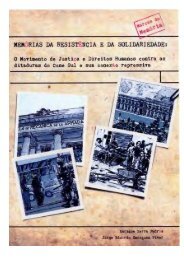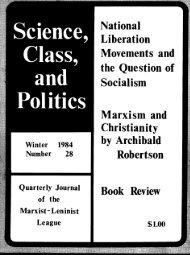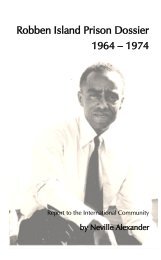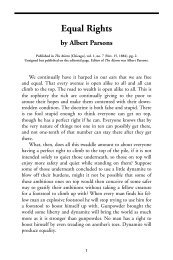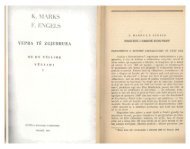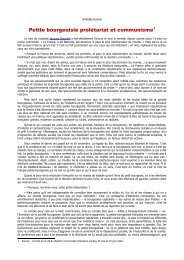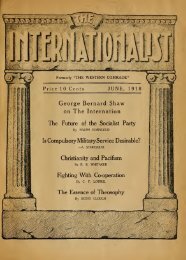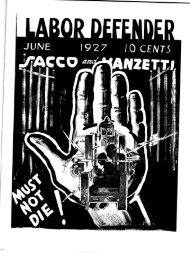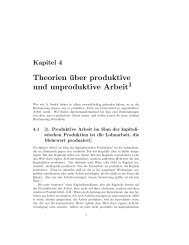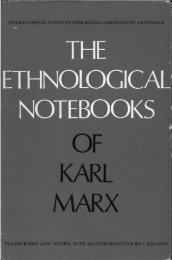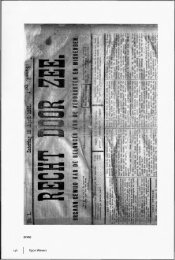The Birth of the Modern Hawaiian Movement: Kalama Valley, O'ahu
The Birth of the Modern Hawaiian Movement: Kalama Valley, O'ahu
The Birth of the Modern Hawaiian Movement: Kalama Valley, O'ahu
You also want an ePaper? Increase the reach of your titles
YUMPU automatically turns print PDFs into web optimized ePapers that Google loves.
in <strong>the</strong>ir own right, and all had served on various Boards <strong>of</strong> Directors<br />
for <strong>the</strong> sugar companies, banks, public utilities, and several development<br />
corporations. At least two were members <strong>of</strong> <strong>the</strong> Pacific Club,<br />
for years a "whites only" social club. None <strong>of</strong> <strong>the</strong>m had any<br />
sympathies for <strong>the</strong> land rights <strong>of</strong> <strong>Hawaiian</strong>s or o<strong>the</strong>r local tenants. 14<br />
While most <strong>of</strong> <strong>the</strong> <strong>Valley</strong>'s residents were certainly <strong>Hawaiian</strong>,<br />
many o<strong>the</strong>rs were not. However, <strong>the</strong>y all felt <strong>the</strong>ir way <strong>of</strong> life to be<br />
closer to a <strong>Hawaiian</strong> ra<strong>the</strong>r than a mainland-haolestyle <strong>of</strong> living. By<br />
this <strong>the</strong>y meant not only <strong>the</strong> easy-going attitude <strong>of</strong> <strong>Valley</strong> people to<br />
living in close proximity with pigs, food gardens, auto repair shops<br />
and lots <strong>of</strong> kids and dogs, but a larger concern for people and <strong>the</strong>ir<br />
daily happiness ra<strong>the</strong>r than for money, status, and achievement.<br />
What Lyman called a "rural slum" was to <strong>Valley</strong> people one <strong>of</strong> <strong>the</strong><br />
last places left on <strong>O'ahu</strong> where local people could enjoy a way <strong>of</strong><br />
life not driven by <strong>the</strong> suburbanite's desire for neat lawns, fancy houses<br />
expensive cars, big fences, and unseen neighbors.<br />
This emphasis on <strong>the</strong> "style" <strong>of</strong> local living prefigured many <strong>of</strong><br />
<strong>the</strong> eviction struggles throughout <strong>the</strong> next 15 years. It was variously<br />
expressed as people's rights to land, housing rights, <strong>the</strong> rights <strong>of</strong><br />
"locals" versus those <strong>of</strong> tourists, and <strong>the</strong> rights <strong>of</strong> tenants over<br />
developers and landlords. In <strong>Kalama</strong> <strong>Valley</strong>, <strong>the</strong> courage <strong>of</strong> <strong>the</strong><br />
residents to resist eviction called forth an outpouring <strong>of</strong> support<br />
around <strong>the</strong> State.<br />
<strong>The</strong> first group to answer <strong>the</strong> call for support came from <strong>the</strong><br />
University. Since <strong>the</strong> late 1960s, <strong>the</strong> University had been a center<br />
<strong>of</strong> Hawai'i protest against America's involvement in Vietnam. Many<br />
<strong>of</strong> <strong>the</strong> anti-war students who had protested <strong>the</strong> war linked <strong>the</strong>ir<br />
rising consciousness about American imperialism in Sou<strong>the</strong>ast Asia<br />
to <strong>the</strong> oppressed conditions <strong>of</strong> most <strong>of</strong> Hawai'i's people. <strong>The</strong>y<br />
perceived <strong>the</strong> predominantly white-run University as part <strong>of</strong> a<br />
larger white society that kept students <strong>of</strong> color from studying <strong>the</strong>ir<br />
own history. For <strong>the</strong>se students, demanding an Ethnic Studies<br />
program was <strong>the</strong> logical local counterpart to <strong>the</strong> demand that<br />
America get out <strong>of</strong> Vietnam and allow <strong>the</strong> Vietnamese to determine<br />
<strong>the</strong>ir own future. This call for self-determination was to become a<br />
familiar demand from students, communities, and especially native<br />
<strong>Hawaiian</strong>s as <strong>the</strong> decade progressed. In 1970, it was to bring many<br />
supporters from <strong>the</strong> campus to <strong>Kalama</strong> <strong>Valley</strong>.<br />
FIG. 4. George Santos, pig farmer, resident resister. (Ed Greevy photo.)





